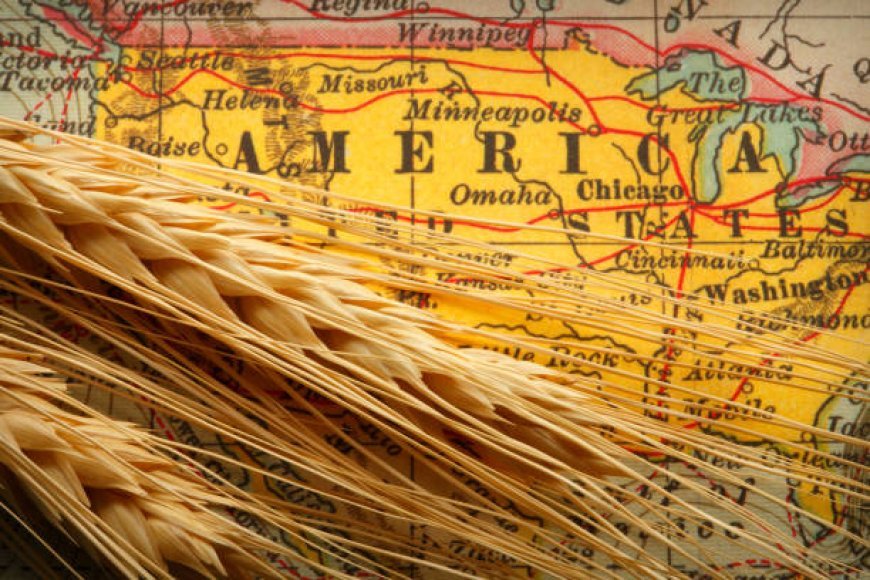Detailed Crop Production Map: Visualizing Agricultural Patterns

In modern agriculture, data visualization tools like crop production maps play an essential role in enhancing understanding and decision-making. A crop production map provides a spatial representation of where various crops are grown, their density, and productivity across regions. This geographic insight is invaluable for farmers, policymakers, agribusinesses, and researchers who seek to optimize agricultural practices, improve resource management, and ensure food security.
What is a Crop Production Map?
A crop production map is a visual tool that illustrates the distribution and intensity of crop cultivation within a particular area. It typically displays data at different scales, from local farms to entire countries or continents. By combining information on land use, crop types, yield, and environmental factors, these maps help stakeholders grasp complex agricultural patterns that might otherwise be difficult to analyze.
How Crop Production Maps Are Created
Creating an accurate crop production map involves the integration of various data sources and technologies:
1. Satellite Imagery and Remote Sensing:
Satellites capture high-resolution images of farmland, enabling identification of crop types based on spectral signatures. These images are processed and analyzed using specialized software to classify land use and estimate crop acreage.
2. Geographic Information Systems (GIS):
GIS technology enables the layering of multiple datasets, such as soil type, rainfall, and crop yield, on geographic maps. This integration allows for detailed spatial analysis and pattern recognition.
3. Ground Surveys and Farmer Data:
Data collected directly from farmers and agricultural surveys provide ground-truthing, ensuring that satellite-based classifications are accurate and reliable.
4. Machine Learning and AI:
Advanced algorithms enhance crop classification by learning from large datasets, improving accuracy in distinguishing between similar crops and detecting changes over time.
Benefits of Using Crop Production Maps
The use of crop production maps offers numerous advantages across the agricultural value chain:
1. Enhanced Crop Management:
Farmers and agronomists can use these maps to monitor crop health, identify underperforming areas, and apply inputs such as fertilizers and irrigation more precisely.
2. Efficient Resource Allocation:
Governments and agricultural agencies utilize production maps to distribute resources effectively, plan subsidies, and implement support programs where they are most needed.
3. Market and Supply Chain Insights:
Businesses involved in procurement, processing, and export can anticipate supply volumes and adjust operations accordingly, reducing wastage and optimizing logistics.
4. Disaster and Risk Management:
Crop production maps help assess the impact of natural disasters, pests, or diseases by comparing current data with historical patterns. This aids in timely interventions and recovery planning.
5. Research and Policy Development:
Researchers analyze spatial crop data to understand trends, evaluate the impact of climate change, and design policies that promote sustainable agriculture.
Applications of Crop Production Maps
The versatility of crop production maps allows them to be applied in various contexts:
-
National Agricultural Planning:
Governments can monitor nationwide cropping patterns and yields, enabling strategic food security planning and international trade negotiations.
-
Precision Agriculture:
At the farm level, maps guide variable rate application of inputs, improving yield and minimizing environmental impact.
-
Environmental Monitoring:
By tracking changes in crop patterns, stakeholders can identify shifts caused by climate variability, land degradation, or urban expansion.
-
Investment and Development Projects:
Investors and development agencies assess crop production maps to identify promising areas for agricultural projects or infrastructure investments.
Challenges in Developing Crop Production Maps
While crop production maps are powerful tools, they come with certain challenges:
-
Data Accuracy and Resolution:
Cloud cover, mixed cropping, and small plot sizes can complicate satellite image interpretation, leading to inaccuracies.
-
Timeliness of Data:
Agricultural dynamics change quickly; outdated maps may not reflect current conditions, affecting decision-making.
-
Integration of Diverse Data Sources:
Combining remote sensing data with ground surveys and socio-economic data requires technical expertise and coordination.
-
Access and Usability:
Ensuring that farmers and local stakeholders can access and interpret maps remains a challenge, especially in developing regions.
Efforts to overcome these challenges include investing in higher resolution satellite platforms, improving data processing algorithms, and developing user-friendly mapping interfaces.
Case Study: Crop Production Mapping in India
India, with its vast and diverse agricultural landscape, has been leveraging crop production maps to improve food security and resource management. The Indian government’s Ministry of Agriculture employs satellite data combined with field surveys to generate state-wise crop production maps every season. These maps help monitor major crops such as rice, wheat, maize, and pulses, enabling better forecasting of production volumes.
The maps have been instrumental in guiding procurement decisions under the Public Distribution System and formulating targeted intervention strategies during droughts or floods. Moreover, digital platforms provide farmers with access to localized crop maps, empowering them to make data-driven choices.
The Future of Crop Production Maps
Advancements in technology promise to make crop production maps even more detailed, dynamic, and accessible:
-
Real-Time Monitoring:
With the proliferation of satellite constellations and drone technologies, near real-time crop production maps will become feasible, allowing for rapid response to emerging issues.
-
Integration with IoT:
Combining crop maps with data from soil sensors, weather stations, and farm machinery will provide holistic insights into crop performance.
-
AI-Driven Predictive Analytics:
Artificial intelligence will enable predictive modeling based on crop production maps, forecasting yields, pest outbreaks, or market trends before they occur.
-
Greater Accessibility:
Mobile applications and cloud-based platforms will democratize access to crop production maps, benefiting smallholder farmers worldwide.
Conclusion
A detailed crop production map is a transformative tool in modern agriculture, providing vital spatial insights that drive better decision-making. From improving farm-level management to supporting national food security strategies, these maps enable stakeholders to visualize agricultural patterns with clarity and precision.
As technology continues to evolve, crop production maps will become more accurate, timely, and user-friendly, fostering a more resilient and productive agricultural sector. Embracing these mapping innovations will be key to meeting the challenges of global food demand, climate change, and sustainable development.
What's Your Reaction?




























































